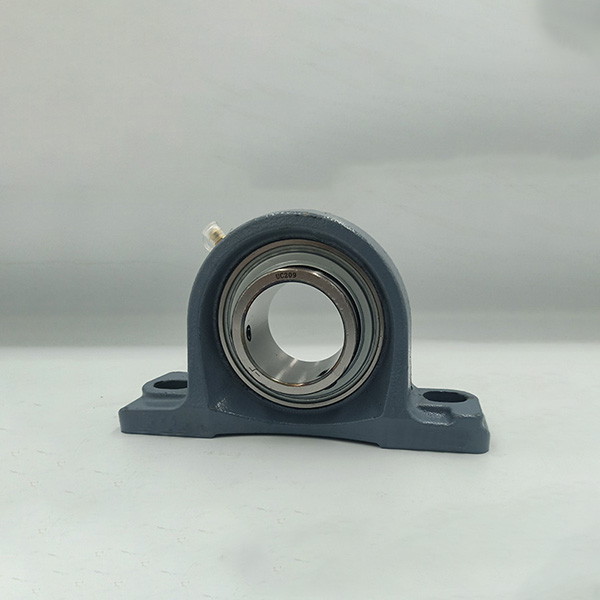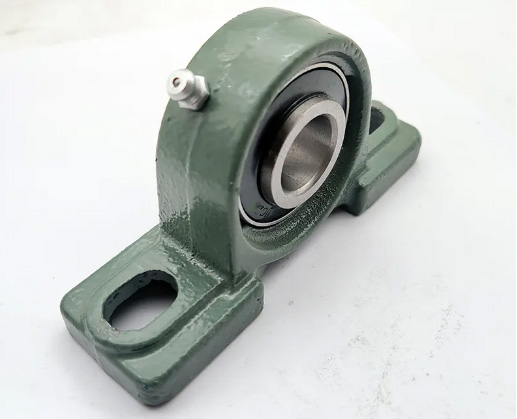Metric tapered roller bearings are separable bearings, and both the inner and outer rings of the bearing have tapered raceways. This type of bearing is divided into different structural types, such as single-row, double-row, and four-row tapered roller bearings, according to the number of rows of rollers installed. The double-row and four-row metric tapered roller bearing clearances have been given according to the user’s requirements when the product leaves the factory, and do not need to be adjusted by the user. Single row tapered roller bearings can withstand radial loads and axial loads in one direction. When the bearing is subjected to radial load, an axial component force will be generated, so when another bearing that can withstand axial force in the opposite direction is needed to balance it. Tapered roller bearings mainly bear the combined radial and axial loads in the radial direction. The bearing capacity depends on the raceway angle of the outer ring, and the larger the angle, the greater the bearing capacity.
Metric tapered roller bearing applications
Metric tapered roller bearings mainly bear the combined radial and axial loads in the radial direction. The bearing capacity depends on the raceway angle of the outer ring, and the larger the angle, the greater the bearing capacity. This type of bearing is a separable bearing, which is divided into single-row, double-row, and four-row metric tapered roller bearings according to the number of rows of rolling elements in the bearing. The clearance of single-row tapered roller bearings needs to be adjusted by the user during installation; the clearance of double-row and four-row tapered roller bearings has been given according to the user’s requirements when the product leaves the factory and does not need to be adjusted by the user.
Metric tapered roller bearings have tapered inner and outer raceways with tapered rollers arranged in between. The projected lines of all conical surfaces meet at the same point on the bearing axis. This design makes metric tapered roller bearings particularly suitable for combined (radial and axial) loads. The axial load capacity of the bearing is mostly determined by the contact angle α; the larger the α angle, the higher the axial load capacity. The size of the angle is represented by the calculation coefficient e; the larger the value of e, the larger the contact angle, and the greater the applicability of the bearing to bear the axial load.
Metric tapered roller bearings are usually separable; that is, the tapered inner ring assembly consisting of the inner ring with the roller and cage assembly can be installed separately from the tapered outer ring (outer ring).
Metric tapered roller bearings are widely used in automobiles, rolling mills, mining, metallurgy, plastic machinery, and other industries.
Although the quality of metric tapered roller bearings is relatively good, rolling bearings are precision parts, and their use must also be carried out with caution. No matter how high-performance bearings are used, if they are used incorrectly, the expected performance will not be obtained.

The precautions for the use of metric tapered roller bearings are as follows:
- Keep the metric tapered roller bearings and their surroundings clean.
Even small dust that is invisible to the eye can have a bad effect on the bearing. Therefore, keep the surrounding clean so that dust does not penetrate the bearing.
- Used with care.
When metric tapered roller bearings are given a strong impact during use, scars and indentations will occur, which may cause accidents. In severe cases, cracks and fractures may occur, so care must be taken.
- Use appropriate operating tools.
You must not replace existing tools. You must use the right tools.
- Pay attention to the corrosion of tapered roller bearings.
Sweat on your hands can be the cause of rust when handling bearings. Be careful to operate with clean hands, and it is best to wear gloves as much as possible.
It is a common method for metric tapered roller bearings to use hearing to identify irregular operations. For example, using an electronic stethoscope to detect abnormal noise in a part is used by experienced operators. If the bearing is in good operating condition, it will emit a low whine sound, and if it emits a sharp hissing sound, a tapered roller bearing, a squeaking sound, or other irregular sounds, it usually indicates that the bearing is in poor operating condition.
- Spectral analysis found that the concentration of non-ferrous metal elements was abnormal; many sub-micron wear particles of non-ferrous metal components appeared in the ferrography; the moisture content of the lubricating oil exceeded the standard; and the acid value exceeded the standard.
- There is strain on the journal surface: There are iron-based cutting abrasive particles or black oxide particles in the ferrography, and there is a tempered color on the metal surface.
- Spectral analysis found that the concentration of iron was abnormal, there were many sub-micron particles of iron in the ferrography, and the moisture content of the lubricating oil exceeded the standard or the acid value exceeded the standard.
- There are cutting abrasive particles found in the ferrography, and the abrasive particles are non-ferrous metals.
- Spectral analysis found that the iron concentration was abnormal, there were many sub-micron wear particles of iron composition in the ferrography, and the moisture and acid value of the lubricating oil were abnormal.

Under the condition of liquid lubrication, the sliding surfaces are separated by the lubricating oil without direct contact, which can greatly reduce friction loss and surface wear. The oil film also has a certain vibration-absorbing ability.
High-pitched creaking noises can be caused by improper lubrication. Improper bearing clearance can also cause metallic noise. The dent on the outer ring track of the tapered roller bearing will cause vibration and cause a smooth and crisp sound. If it is due to the knocking scar caused by the installation, it will also generate noise. The noise will vary with the speed of the bearing. If there is intermittent noise, it means that the rolling parts may be damaged. The sound of tinkling tapered roller bearings occurs when the damaged surface is rolled over. If there is contamination in the bearing, it will often cause a hissing sound. Serious bearing damage will cause irregular and loud noises to be produced.
As a professional China ucp 205 manufacturer, Smark Bearing has rich production experience and is one of the experts in this industry. After years of development, we have become one of the largest exporters of pillow block bearings. If you are interested in our products, you are welcome to contact us. We sincerely look forward to establishing a cooperative relationship with you.

